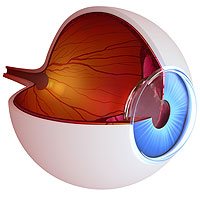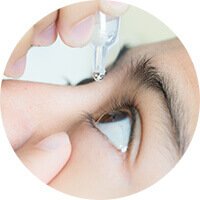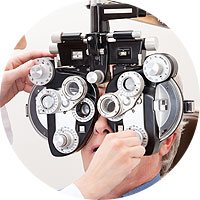
Glaucoma is an eye condition that, if left untreated, can be threatening to your eyesight. It does not present many symptoms, therefore, it is essentially undetectable without help from a professional.
Any damage to your vision by glaucoma is permanent, so early treatment and detection are essential to preserving vision. Keep reading to learn more about what glaucoma is!
How Glaucoma Starts
In order for proper functioning and the eye to stay healthy, it cycles nutrient-rich fluid through itself constantly. When this fluid finishes delivering its nutrients, it drains through a meshwork drainage system.
To get to this meshwork drainage system, the fluid first travels through the angle of the eye. The angle is where the colored part of your eye, called the iris, meets the cornea and sclera, the white part of your eye.
However, for various reasons, this drainage system can become partially blocked. When it’s blocked, the rate of fluid drainage from the eye can slow.
Without being able to drain at a normal rate, the fluid builds up, causing pressure inside the eye to rise. Eye pressure is also known as intraocular pressure or IOP.
When your IOP is consistently higher than normal, it can cause damage to the structures inside of your eye. The optic nerve is located at the back of your eye, and it delivers information gathered by the light-sensitive retinal tissue to the brain.
Any damage done to the optic nerve by high pressure cannot be reversed, making vision loss permanent. Once glaucoma is detected, your eye doctor can start treatment immediately to lower the eye pressure and prevent any further vision loss.
Angle-Closure Glaucoma
There are many types of glaucoma. The most common type of glaucoma is open-angle glaucoma.
In open-angle glaucoma, there is a gradual increase of pressure from a partial blockage of the drainage angle. When the drainage angle becomes blocked suddenly, it is called angle-closure glaucoma.
In angle-closure glaucoma, the fluid is blocked and cannot drain from the eye. When this happens, your IOP skyrockets, causing very sudden and very apparent symptoms.
Symptoms associated with angle-closure glaucoma include:
- Severe headache
- Sudden blurred vision
- Nausea and vomiting
- Eye pain
- Halos appearing around lights
Angle-closure glaucoma constitutes a medical emergency as you can lose vision very quickly from it. If you are experiencing symptoms in line with angle-closure glaucoma, seek medical treatment as soon as possible.
How Do Eye Doctors Manage Glaucoma
While there is currently no cure for glaucoma, you can stop the disease from progressing with a dedicated treatment plan. The first primary treatment method for glaucoma is medicated eye drops.
These medicated eye drops are designed to normalize eye pressure by either increasing the outflow or slowing fluid production. The important thing to remember about glaucoma medication is to take it consistently.
Any lapse in your medication routine can cause your IOP to increase again, causing more damage. In some cases, medicated eye drops may not adequately reduce the eye pressure.
Your eye doctor may recommend alternate methods to lower your eye, like laser procedures or glaucoma surgery. It is essential to visit your eye doctor routinely, so they can monitor your eye pressure and adjust your treatment plan if needed.
Do you want to learn more about how you can keep your eyes safe from vision damage caused by glaucoma? Schedule an appointment at Eye Care Specialists in Kingston, PA, today!

















